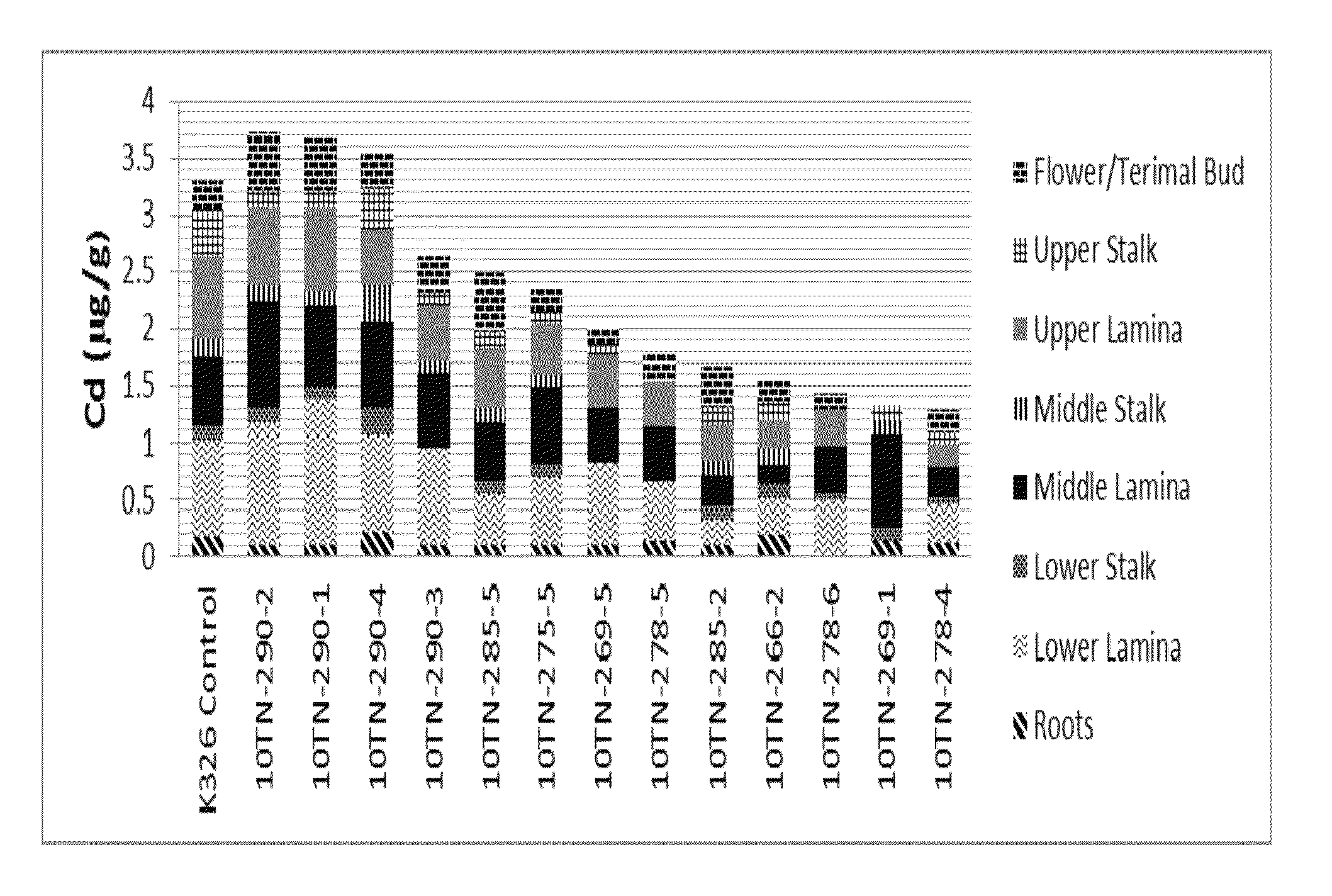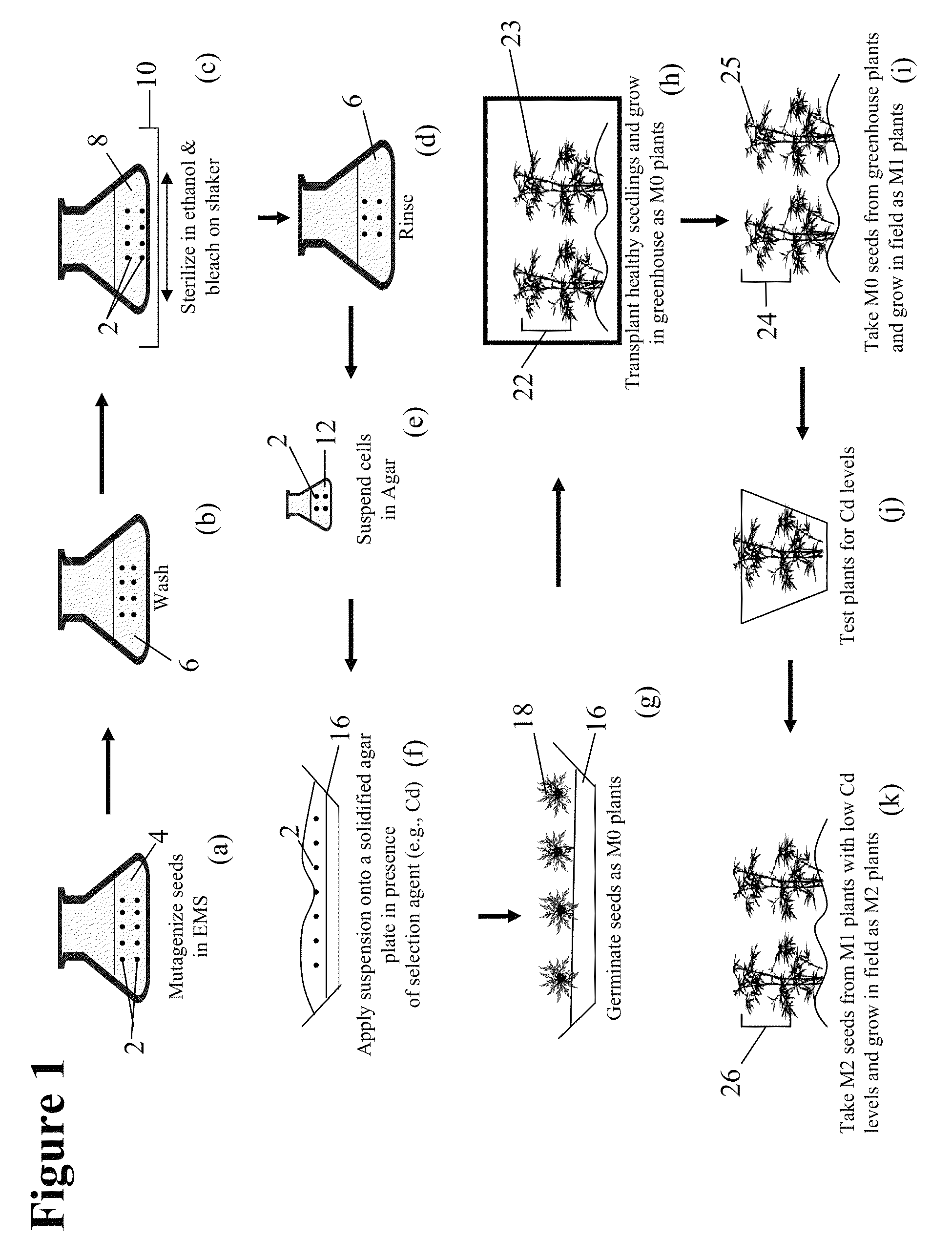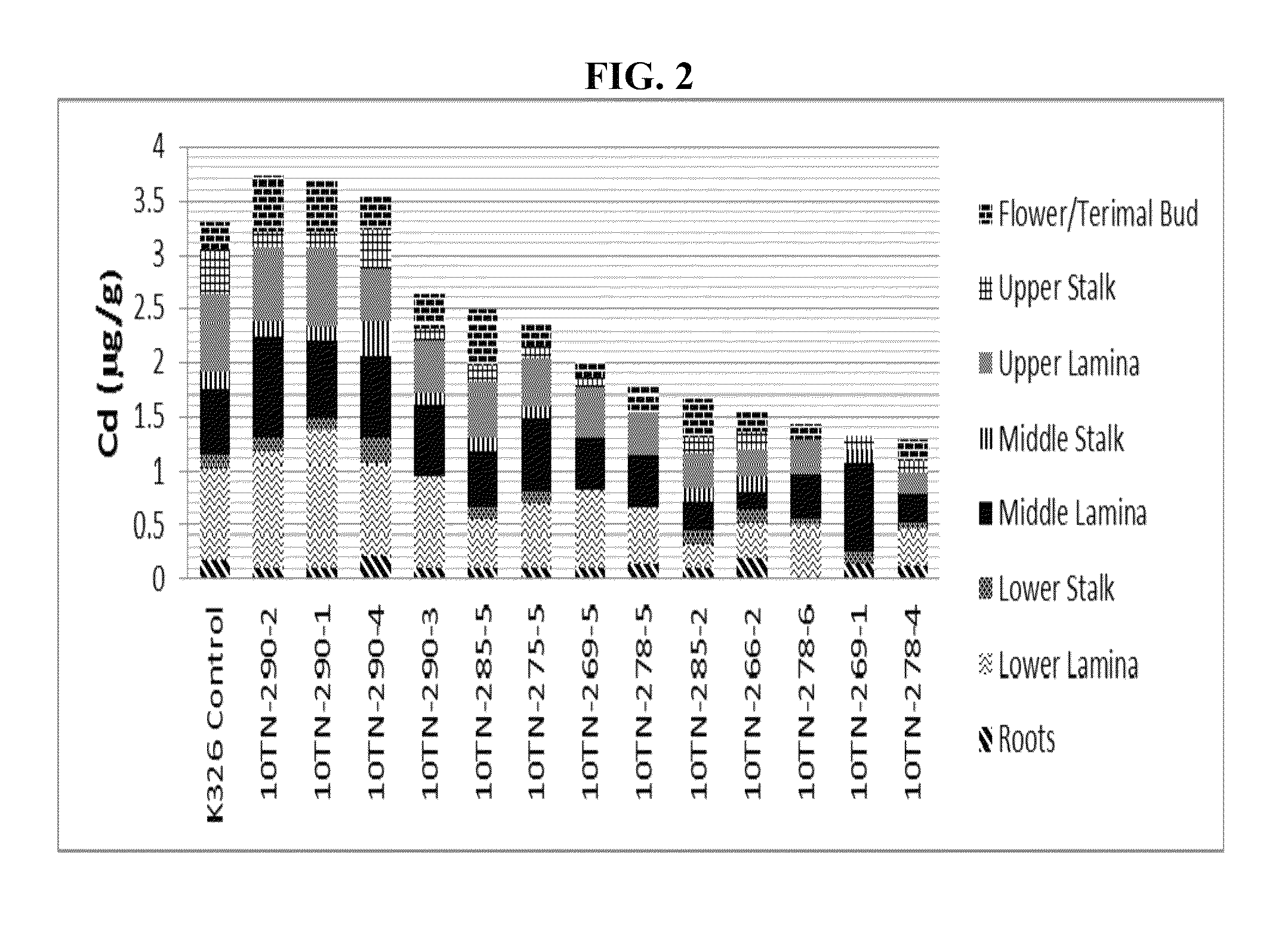Tobacco having altered amounts of environmental contaminants
a technology of environmental contaminants and tobacco, applied in the field of tobacco making methods, can solve the problems that the establishment of true genetic differences in existing cultivars is difficult to characterize with precision, and achieve the effect of altering uptake and/or levels
- Summary
- Abstract
- Description
- Claims
- Application Information
AI Technical Summary
Benefits of technology
Problems solved by technology
Method used
Image
Examples
example 1
Mutation of Tobacco
[0107]Seed from NL Madole, a dark-fired tobacco variety, and K326, a flue-cured variety, were mutagenized with 0.5% EMS (ethyl methane sulfonate) and designated as M0. The M0 mutant populations were screened on tissue culture media containing 150 μM Cd.
[0108]To generate mutagenized tobacco, various (i.e., about 10 separate) aliquots of the NL Madole or K326 seeds were incubated in a solution containing ethyl methane sulfonate (EMS) at a concentration of about 0.5% for 20 hrs. Both K326 seeds and non-mutagenized NL Madole seeds were used as the control. The treated seeds were then washed with MiliQ water (purified with an NANO pure II system; Barnstead / Thermolyne Corp.; Dubuque, Iowa) for 30 minutes and sterilized with 70% ethanol for 30 seconds followed by 20% Clorox for 20 min on an agitating shaker.
[0109]The M0 mutant populations were then screened on tissue culture media containing 150 μM Cd. Thus, after rinsing with sterile MiliQ water at least 5 times, the se...
example 2
Analysis of for Cd Levels in Various Tobacco Lines Mutated Using the Methods of the Invention
[0112]Twenty-two potential fields were evaluated and soil samples were submitted for Cd analysis. A field containing relatively high levels of Cd was identified in Greeneville, Tenn. (see Table 1). M1 and M2 tobacco breeding lines were evaluated and screened under field conditions at this location. In addition, several wild species of N. tabacum that have been reported to have resistance to Cd uptake were tested alongside M1 and M2 selections for comparison.
[0113]All samples were collected at bud stage. Lower leaf lamina was collected from individual M1 plants for analysis because of individual plant variation at the M1 generation. Lower leaf lamina was collected from whole plots of a few of the M2 lines for analysis. All lamina was frozen on dry ice, and freeze-dried to maintain leaf integrity. Freeze-dried samples were analyzed for content of Cd and other selected heavy metals. Table 1 bel...
example 3
Uptake and Distribution of Cd within the Tobacco Plant Mutagenesis and Breeding
[0125]Seeds from K326, a flue-cured variety, were mutagenized with EMS (ethyl methane sulfonate) essentially as described for Example 1. The M0 mutant populations were screened on tissue culture media containing 150 μM Cd. Plantlets that survived the treatment were rescued and transferred to soil. Self-seed was collected from each surviving plant in the greenhouse. This M1 seed was sown and mature transplants transplanted to the Tennessee field described in Example 2 (i.e., Table 1) known to have higher than average Cd levels. These M1 flue-cured tobacco breeding lines were evaluated and screened under field conditions at this location. Early season samples were collected from lower stalk green leaf and analyzed for Cd.
[0126]Based on early season (i.e., 65 days after transplant) heavy metal data, plants were selected for late season (i.e., 145 days after transplant) analysis to determine where the Cd was ...
PUM
| Property | Measurement | Unit |
|---|---|---|
| dry weight | aaaaa | aaaaa |
| temperature | aaaaa | aaaaa |
| temperature | aaaaa | aaaaa |
Abstract
Description
Claims
Application Information
 Login to View More
Login to View More - R&D
- Intellectual Property
- Life Sciences
- Materials
- Tech Scout
- Unparalleled Data Quality
- Higher Quality Content
- 60% Fewer Hallucinations
Browse by: Latest US Patents, China's latest patents, Technical Efficacy Thesaurus, Application Domain, Technology Topic, Popular Technical Reports.
© 2025 PatSnap. All rights reserved.Legal|Privacy policy|Modern Slavery Act Transparency Statement|Sitemap|About US| Contact US: help@patsnap.com



